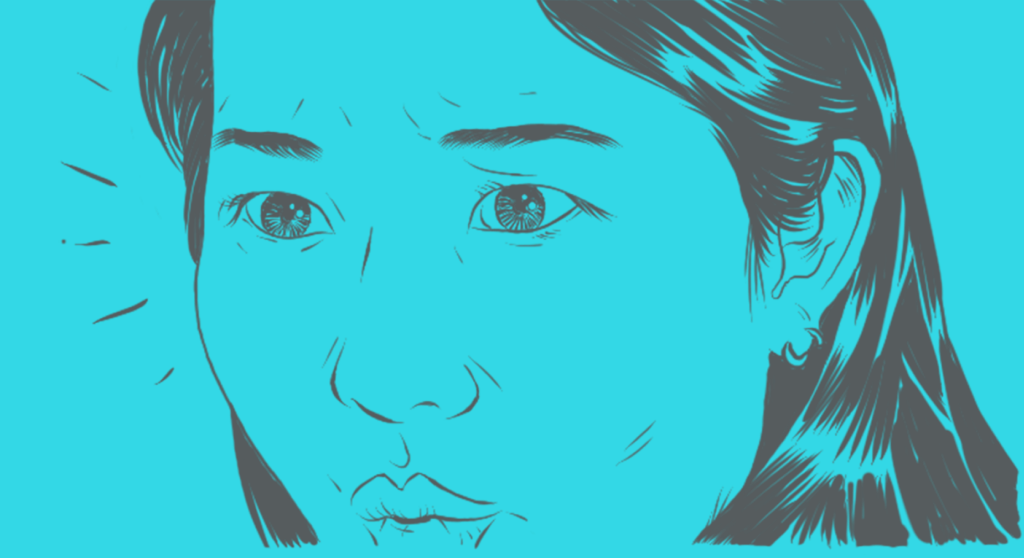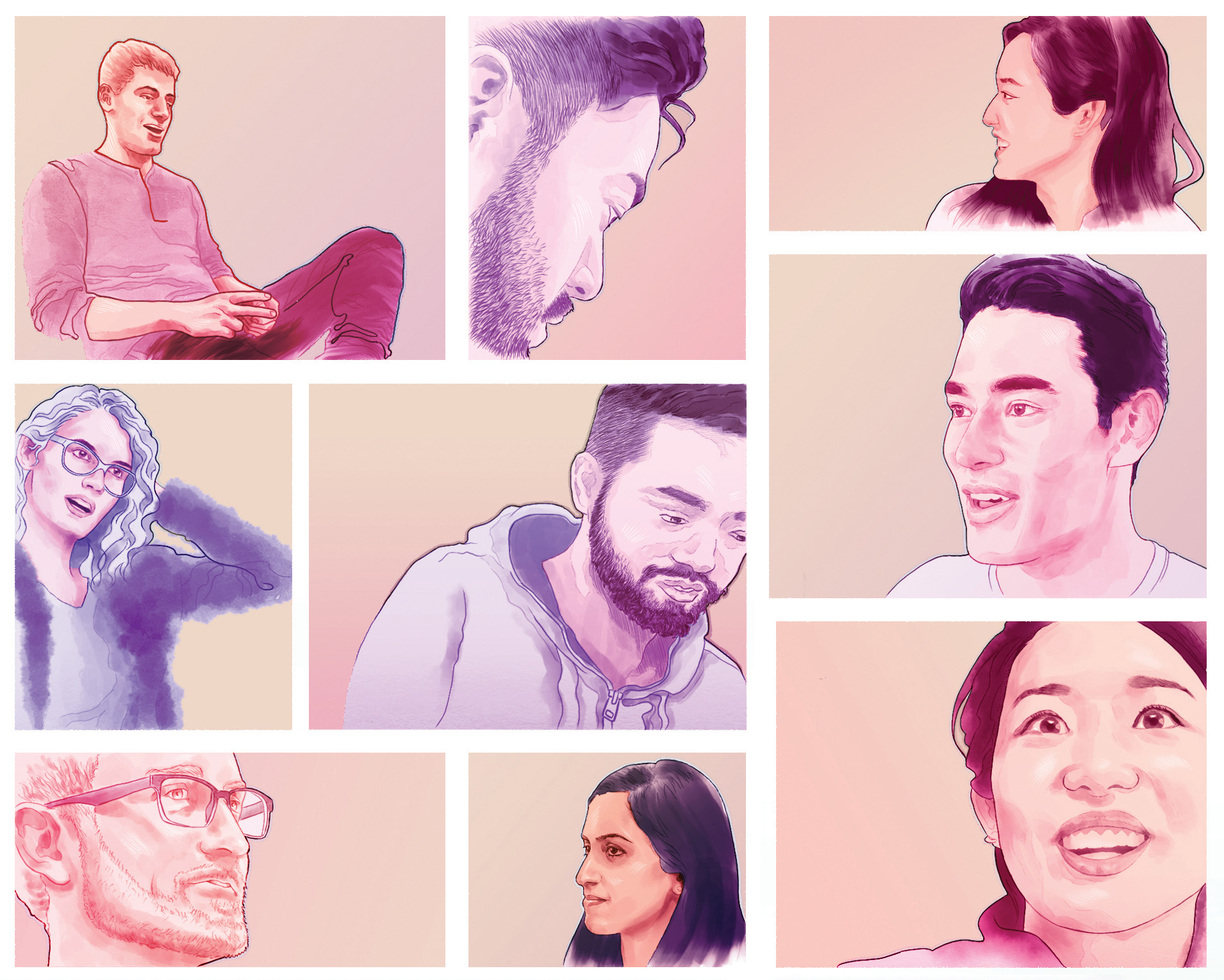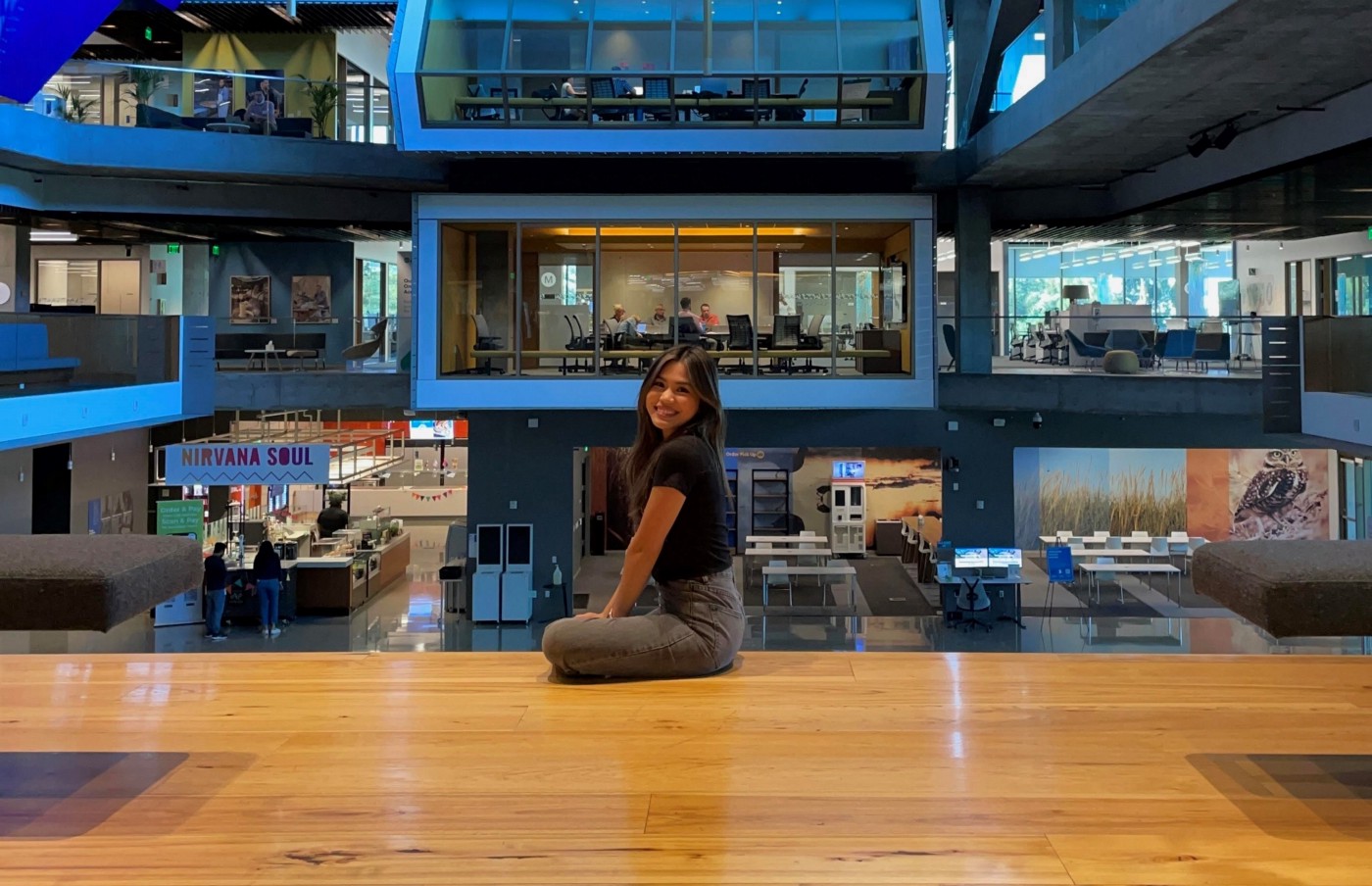Designers were being brought into projects too late for them to be effective. We decided to show a better way to work together.
One day, a design director approached me with a concern — content designers were being brought in too late on projects. They had no time to contribute to the outcome in a meaningful way. As a visual designer, I could relate. Sometimes I was introduced to a project with only enough time to polish someone else’s designs.
If only we all started working on something at the same time, imagine the impact each team member could make, not to mention the benefit to our customers. The director, a few content designers, and I decided to stop imagining and show our design community a better way to work together.

How do we show them?
If we were going to change the way people worked together, we needed something better than just another slide deck; they rarely inspire anyone. We also didn’t want to dictate this change; rather, we wanted to inspire it.
So we started throwing around some creative ideas. The director imagined a “choose your own adventure” story that mirrored the daily struggles of the design team. Other people thought visuals would help the narrative. I threw out the idea of a comic book, kind of as a joke.
A day later, everyone loved that idea. They loved that comic books are engaging, approachable, and don’t feel like a directive.
What is the story?
We knew the set-up had to be broadly relatable for every designer, no matter their title or group: “designers try to solve a customer problem.” We resisted getting bogged down in details.
We decided to show two approaches to a single task. One path (the happy path) had the team working together from the start and it all worked out. The other path (the unhappy one) brought everyone in one-by-one and, predictably, things didn’t end well.
Our own experiences in these situations informed these two journeys. We believed that if readers saw themselves in the characters, they’d relate to them. They’d see the benefits of working together versus alone.
The unhappy path
The content designers and I worked out the scenes that were necessary to advance both of the story paths.
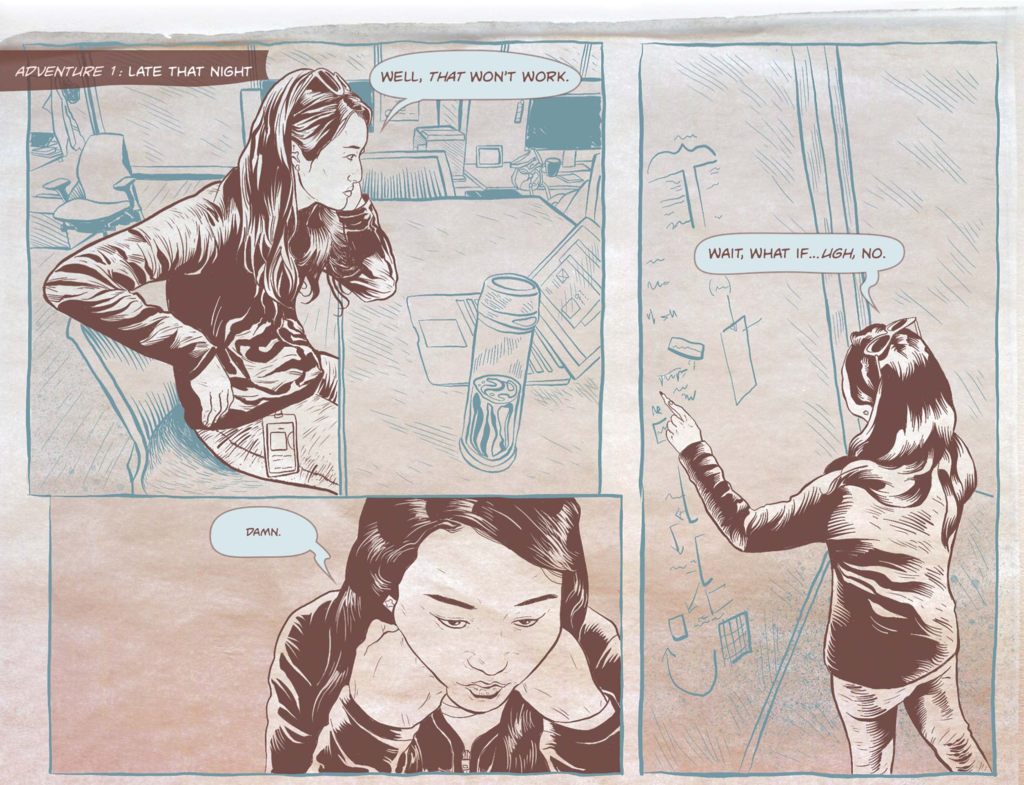
The “unhappy path” showed that working alone initially is more difficult and takes longer, even for the most experienced designer. It also showed that bringing people into the process late made them feel less empowered about the work they were doing. The ending of the unhappy path occurs when the lead designer realizes that assembling the full team should’ve been done at the very beginning.
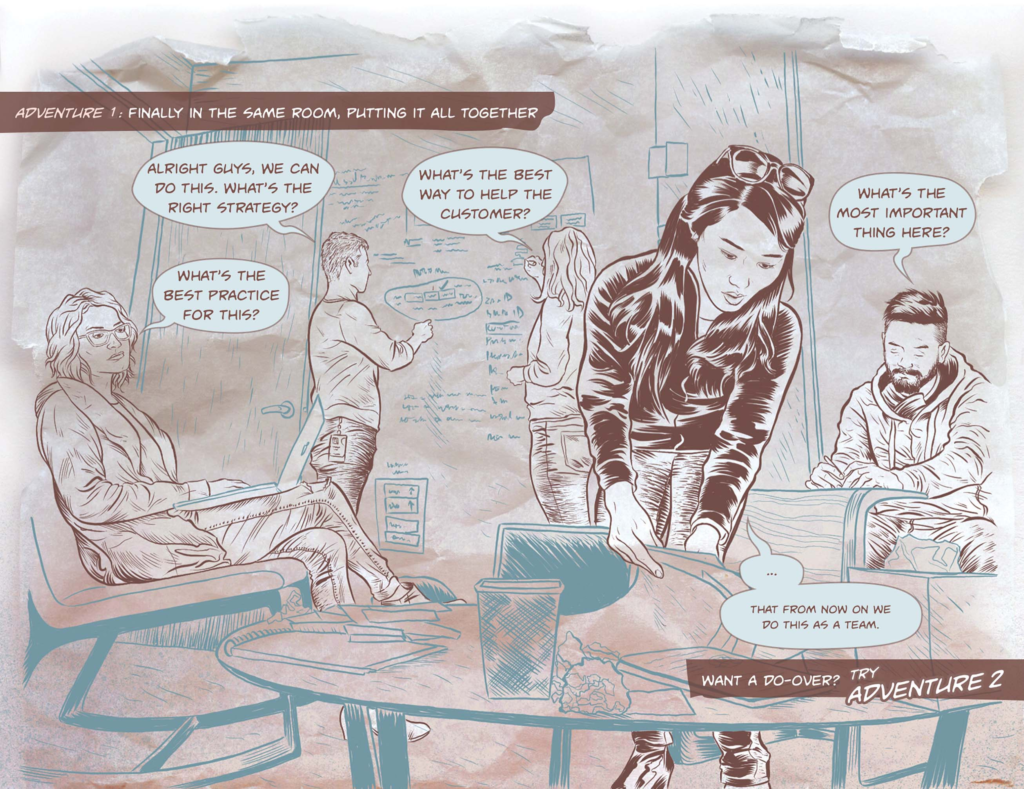
The happy path
In the happy path, the team working session occurred much earlier in the process because the designer made the choice to get everyone involved early. This choice to all start on the same page showed that projects move faster when they begin with this crucial step.
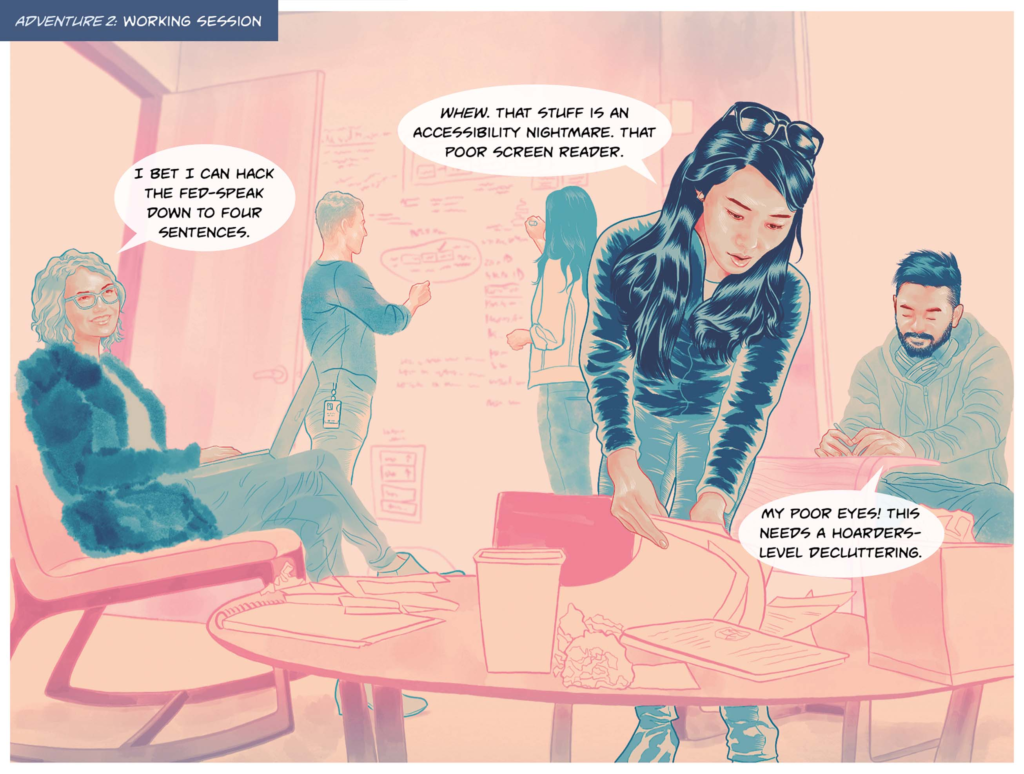
Our story ends with the team celebrating the progress they made. If this seems contrived, I can assure you that my best moments at Intuit are like this. When the lines between work and fun blur, I’m at my happiest here.

Illustration styles
I saw a visual opportunity in drawing the two stories side-by-side. Since they had two different endings, it made sense to draw them in two different styles.
The happy path is all clean lines and lush full color paint strokes. The camera looks up at the characters as if they’re heroes. The unhappy path is rough lines in only two muted colors. The paper texture crumples on each page as the story goes from bad to worse. The camera looks down on the characters. These illustration techniques communicated the stories as much as the words did.

Results and reactions
All designers at Intuit and all new hires got their hands on the comic book starting in January 2019. Based on those that reached out to me, the feedback was positive. Since its release, we’ve heard that more designers say they’re being included at the start of a project.
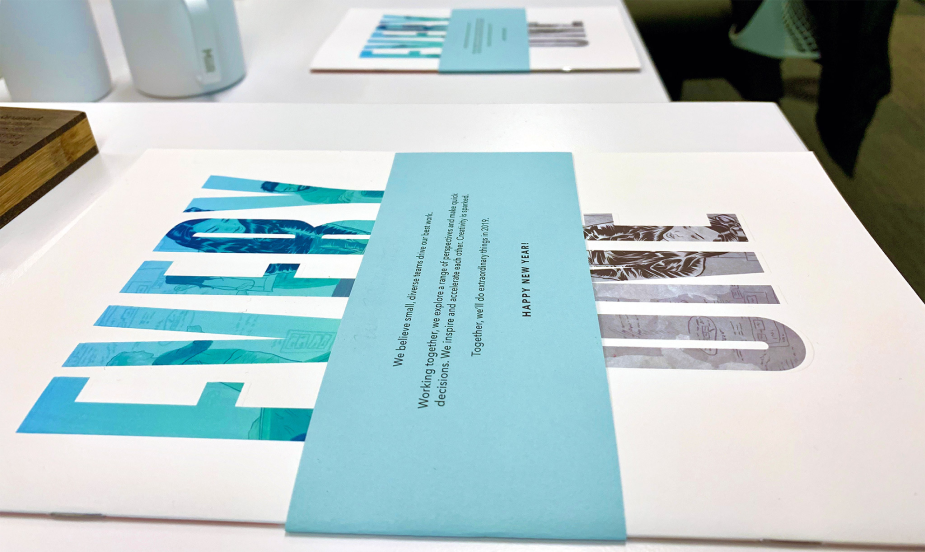
The comic book wasn’t a hobby or side project — it was something to inspire the entire org to be better together. It’s my contribution towards improving Intuit’s culture. The following quote says it best:
I interviewed a candidate yesterday who said she looked at the comic and decided she wanted to work here.
Tina O’Shea, Director of Content Design
